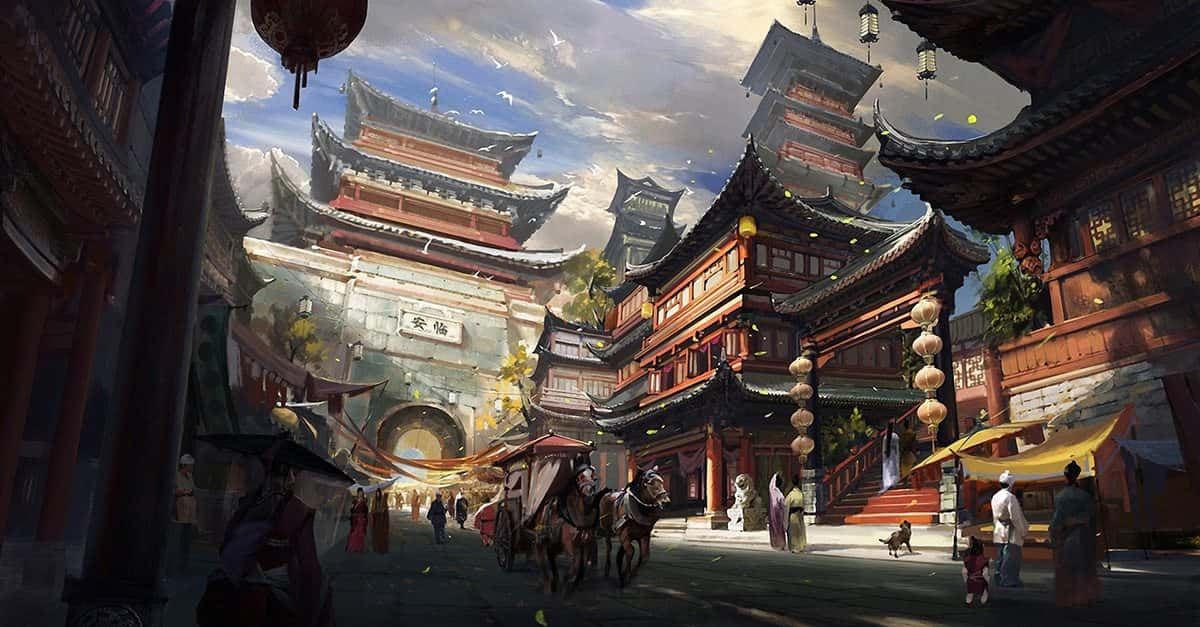Breakthrough After Breakthrough
Apart from building an empire, the Romans surely engineered the future. Their legacy lives on in everything, even the “concrete” beneath our feet. Here’s a look at some of their best innovations.

Roman Concrete
Around 200 BC, Roman concrete became widely used and was essential for the building of many large-scale structures. The Pantheon, the world's biggest unchanged concrete dome, is one example of the material's ability to support huge spans and intricate designs.
 Jean-Christophe BENOIST, CC BY-SA 3.0, Wikimedia Commons
Jean-Christophe BENOIST, CC BY-SA 3.0, Wikimedia Commons
Composition Of Roman Concrete
This concrete was also known as opus caementicium. Roman concrete was primarily composed of volcanic ash, or pozzolana, lime, and aggregates. Pozzolana was mainly sourced from the Bay of Naples, providing hydraulic properties that allowed the concrete to set underwater. After the fall of the Roman Empire in 476 AD, the technique for making pozzolan concrete was lost for almost 1,000 years. A manuscripts describing the technique was finally found in 1414.
Advanced Road Networks
Here’s some quality engineering for you. These roads consisted of multiple layers, such as statumen, rudus, nucleus, and summum dorsum. Statumen worked as a foundation layer of large stones for stability, while Rudus was a layer of gravel mixed with lime mortar.
 Bernard Gagnon, CC BY-SA 3.0, Wikimedia Commons
Bernard Gagnon, CC BY-SA 3.0, Wikimedia Commons
These Roads Even Allowed Water Runoff
Similarly, Nucleus served as a layer of sand and smaller gravel mixed with lime. And lastly, the Summum Dorsum was the top surface made of flat stones or cobblestones for smooth travel. The roads were designed with a slight camber to allow water runoff.
 Nedim Ardoğa, CC BY-SA 3.0, Wikimedia Commons
Nedim Ardoğa, CC BY-SA 3.0, Wikimedia Commons
Straight Routes
This helped to prevent any flooding and erosion. Ditches were also attached alongside roads for adequate drainage. It is said that Roman surveyors made use of instruments like the groma to plot straight routes between destinations.
 Nedim Ardoğa, CC BY-SA 3.0, Wikimedia Commons
Nedim Ardoğa, CC BY-SA 3.0, Wikimedia Commons
Its Main Purpose
Just so you know, the primary purpose of these roads was to allow the rapid movement of Roman legions across the empire. The top-notch road system easily permitted the troops to reach strategic locations quickly, which was important during military campaigns.
 Livioandronico2013, CC BY-SA 4.0, Wikimedia Commons
Livioandronico2013, CC BY-SA 4.0, Wikimedia Commons
Surgical Tools
Before the Romans entered the scene, surgery was pretty basic. But later on, they developed specialized tools like bronze scalpels, forceps, bone drills, surgical saws, hooks, and more. Many of these tools look similar to what surgeons use today.
 Unknown Author, CC BY 4.0, Wikimedia Commons
Unknown Author, CC BY 4.0, Wikimedia Commons
Surgical Tools: Scalpels
Roman scalpels were made from steel or bronze and came in different sizes. Long steel scalpels were used for deep incisions, while smaller bronze scalpels, known as bellied scalpels, were preferred for delicate and precise cuts.
 Metropolitan Museum of Art, CC0, Wikimedia Commons
Metropolitan Museum of Art, CC0, Wikimedia Commons
Surgical Tools: Forceps
Three types of forceps were used. The first was the uvula forceps, which were finely toothed and designed to crush the uvula before amputation to prevent hemorrhaging. The second and third were bone and abdominal forceps, respectively.
 Unknown Author, CC BY 4.0, Wikimedia Commons
Unknown Author, CC BY 4.0, Wikimedia Commons
Newspaper
The Acta Diurna, often considered the first newspaper in history, was established in 59 BCE during the Roman Republic. This daily gazette served as an official record of critical events and announcements. It worked quite similarly to today’s modern newspapers.
 Wknight94, CC BY-SA 3.0, Wikimedia Commons
Wknight94, CC BY-SA 3.0, Wikimedia Commons
Acta’s Motto
Initially, these were carved on stone or metal tablets. Much later, the Acta was written on papyrus. For citizens, these notices were displayed in public spaces such as the Forum of Rome. The Acta had one motto: "publicare et propagare," meaning "to make public and propagate”.
 British Museum, CC BY-SA 3.0, Wikimedia Commons
British Museum, CC BY-SA 3.0, Wikimedia Commons
Glass Production
Interestingly, the Romans turned the luxury craft of glassmaking into an everyday industry. Silica was the main ingredient for glass, sourced from sand (quartz), which contained alumina and lime. Soda was used as a flux to lower the melting point of silica.
Its Composition
During the Roman era, the primary source of soda was natron. This naturally occurring salt was found in dried lake beds, especially near Wadi El Natrun in Egypt. Plus, lime was usually added as a stabilizer to reduce the solubility of the glass.
 Walters Art Museum, Wikimedia Commons
Walters Art Museum, Wikimedia Commons
Colorful Glass
Glassmakers in ancient Rome were excellent at mixing metallic oxides into their goods to create color. Some colors were blue, green, purple, and yellow. By fusing colored glass rods, they also created decorative techniques like marbling and millefiori (flower patterns).
 British Museum, CC BY 2.5, Wikimedia Commons
British Museum, CC BY 2.5, Wikimedia Commons
Central Heating (Hypocaust)
The hypocaust system consisted of a raised floor supported by pillars or stacks known as pilae. These pillars formed an open space beneath the floor where hot air could circulate. This system was mainly used to heat public baths and private villas.
 Pascal RADIGUE, CC BY-SA 4.0, Wikimedia Commons
Pascal RADIGUE, CC BY-SA 4.0, Wikimedia Commons
How Did Hypocaust Work?
A furnace that was placed in a separate room usually generated heat by burning wood or other fuels. Then, the hot air produced from the fire would flow through the hollow chambers beneath the floor and into flues that were built into the walls.
 Daniele Pugliesi, CC BY-SA 4.0, Wikimedia Commons
Daniele Pugliesi, CC BY-SA 4.0, Wikimedia Commons
Where Were Hypocausts Found?
The most typical locations for hypocausts were bathhouses, where they were used to heat various rooms, including the tepidarium (warm room) and caldarium (hot room). The Roman bathing culture relied heavily on the ability to produce a hot, humid environment.
 Ad Meskens, CC BY-SA 3.0, Wikimedia Commons
Ad Meskens, CC BY-SA 3.0, Wikimedia Commons
Aqueducts
An estimated 500 years were spent building Roman aqueducts, starting with the Aqua Appia in 312 BCE and ending with the Aqua Alexandrina in 226 CE. During this time, Rome constructed 11 aqueduct systems that brought water into the city from up to 92 kilometers.
 Unknown Author, CC BY-SA 3.0, Wikimedia Commons
Unknown Author, CC BY-SA 3.0, Wikimedia Commons
Gravity Always Makes Things Easier
Aqueducts were crafted by Roman engineers to take advantage of gravity, with a mild slope that made it easy for water to move from its source to cities. Precise surveying techniques and tools were used for this. Such as the groma and dioptra.
 Bernard Gagnon, CC BY-SA 3.0, Wikimedia Commons
Bernard Gagnon, CC BY-SA 3.0, Wikimedia Commons
Underground Networks
This method consisted of a network of pipes, canals, and tunnels. Water was often channeled through underground pipes lined with clay to prevent leaks. Piscina limaria was used for sedimentation to purify water before it entered distribution systems.
 Cruccone, CC BY-SA 3.0, Wikimedia Commons
Cruccone, CC BY-SA 3.0, Wikimedia Commons
Air Cooling Techniques
The aqueduct system also allowed Romans to advance cooling technologies. In their villas, wealthy individuals used pipes set into the walls to circulate cold water from aqueducts. Especially during the dies canicula (hot weather), this worked successfully.
Bound Books (Codex)
The switch from scrolls to bound books changed everything about reading and writing. By the sixth century, this pattern had spread throughout the Roman Empire, having first appeared in the first century AD. Unlike scrolls, codices were bound along one edge.
 Unknown Author, Wikimedia Commons
Unknown Author, Wikimedia Commons
Papyrus Or Parchment Sheets
The codex consists of multiple sheets of parchment or papyrus folded and stacked. Each of these sheets formed two pages. Early codices were said to be made with wooden boards for covers, which provided protection for the pages.
 Peter van der Sluijs, CC BY-SA 3.0, Wikimedia Commons
Peter van der Sluijs, CC BY-SA 3.0, Wikimedia Commons
Origin Of Codex
Apparently, the term "codex" itself comes from the Latin word caudex, meaning "tree trunk”. This reflects the material (wood) used in its early bindings. The codex became the preferred format for Christian texts, as it was easier to annotate and refer to.
 Yair Haklai, CC BY-SA 4.0, Wikimedia Commons
Yair Haklai, CC BY-SA 4.0, Wikimedia Commons
Apartment Buildings (Insulae)
Most of the Roman populace lived in multi-story apartment buildings called "insulae”. This was their main source of housing, particularly for the lower and middle classes. However, certain laws imposed by Augustus limited the height to around 68 feet.
 Marco Almbauer, Wikimedia Commons
Marco Almbauer, Wikimedia Commons
Unfortunate Accidents
The ground floors were mostly reserved for shops and workshops known as tabernae, while residential apartments occupied the upper levels. There were incidents, though, such as the Great Fire of Rome in 64 CE. The accident highlighted the dangers associated with it.
 Charles Gardner, Wikimedia Commons
Charles Gardner, Wikimedia Commons
Postal System (Cursus Publicus)
The empire was linked by this state-run mail service via a system of relay stations. Augustus, the Emperor, founded it in 20 BCE. Earlier systems, largely the Persian royal courier service, are said to have served as an inspiration for this.
 Nicolas von Kospoth, CC BY-SA 3.0, Wikimedia Commons
Nicolas von Kospoth, CC BY-SA 3.0, Wikimedia Commons
The Relay Stations
Its main feature was relay stations, known as mutationes. These were present at regular intervals along major roads. Here, couriers could change horses and rest. The stations were also staffed by local inhabitants who provided support for the couriers.
 DocWoKav, CC BY-SA 4.0, Wikimedia Commons
DocWoKav, CC BY-SA 4.0, Wikimedia Commons
Sanitation System
One of the earliest components of Roman sanitation, the Cloaca Maxima, was built during the 6th century BCE. It was designed to drain marshy areas and stormwater but evolved into a comprehensive sewer system that collected waste from public latrines and households.
 Mbattista22, CC BY-SA 4.0, Wikimedia Commons
Mbattista22, CC BY-SA 4.0, Wikimedia Commons
Tiber River Takes The Dump
This waste from the Cloaca Maxima was then directed to the Tiber River. The sewer was about 25 feet wide and over 1,000 feet long. About the maintenance and oversight, such sanitation systems were managed by officials called aediles in ancient Rome.
 Christoffer Wilhelm Eckersberg, Wikimedia Commons
Christoffer Wilhelm Eckersberg, Wikimedia Commons
Roman Bridges
The arch was a characteristic of Roman bridges that allowed for larger spans than those of conventional flat beam designs. It is seen as one of the strongest structural shapes because of its weight distribution. Voussoirs (wedge-shaped stones) were used for construction.
 A stray sheep, CC BY-SA 3.0, Wikimedia Commons
A stray sheep, CC BY-SA 3.0, Wikimedia Commons
Use Of Cofferdams
Now, for bridges built over water, the Romans employed cofferdams. These are temporary enclosures made from wooden piles driven into the riverbed. This approach allowed workmen to block off areas of water so they could build piers in dry conditions.
 Rijksmuseum, CC0, Wikimedia Commons
Rijksmuseum, CC0, Wikimedia Commons
Roman Numerals
We’ve all used these numbers at least once in our lives. Roman numerals originated from ancient Rome. These are characterized by the use of letters from the Latin alphabet to represent numbers, starting around 500 BC.
 Alex1011, CC BY-SA 3.0, Wikimedia Commons
Alex1011, CC BY-SA 3.0, Wikimedia Commons
Latin Characters
The Romans gave us their distinctive counting system using capital letters like I, V, and X. During medieval times, writers created lowercase versions (i, v, x) for easier writing. Both forms are being used today, with capitals used formally and lowercase in casual texts.
 Paul R. Burley, CC BY-SA 4.0, Wikimedia Commons
Paul R. Burley, CC BY-SA 4.0, Wikimedia Commons
Bread And Circuses
“Bread and circuses" (panem et circenses) was coined by the Roman poet Juvenal in the late 1st century AD. This meant to describe a political strategy that provided superficial appeasement to the people through food and entertainment rather than addressing more civic needs.
 Rabax63, CC BY-SA 4.0, Wikimedia Commons
Rabax63, CC BY-SA 4.0, Wikimedia Commons
Augustus Was A Good Guy
The program involved the distribution of subsidized grain to citizens, ensuring that even the poorest could access food. So, Augustus expanded the "bread and circuses" system to include not only grain but also monetary assistance, clothing, and public housing for the needy.
 Louvre Museum, CC0, Wikimedia Commons
Louvre Museum, CC0, Wikimedia Commons
Dental Practices
One would say that dental practices in ancient Rome were quite advanced for their time as they placed high emphasis on oral hygiene. They used frayed sticks or chewing sticks made from aromatic woods like cinnamon or olive to clean their teeth.
 Rajmishra757, CC BY-SA 4.0, Wikimedia Commons
Rajmishra757, CC BY-SA 4.0, Wikimedia Commons
Their Version Of Toothpaste
The Romans used a mixture of substances, like oyster shells mixed with water and crushed bones, as an abrasive agent. It basically worked as toothpaste. Also, mixtures of honey and powdered charcoal were used as teeth-polishing materials.
 dozenist, CC BY-SA 3.0, Wikimedia Commons
dozenist, CC BY-SA 3.0, Wikimedia Commons
DIY Mouthfreshers
To maintain fresh breath, they would use mouthwashes made from ingredients like vinegar or a mixture of wine and water. Also, in case of tooth loss, it was sometimes addressed with prosthetics made from human or animal teeth secured with gold or silver wires.
 Unknown Author, CC BY 4.0, Wikimedia Commons
Unknown Author, CC BY 4.0, Wikimedia Commons
Julian Calendar
The Julian calendar was introduced to simplify the complex Roman lunar calendar, which required constant adjustments to align with the seasons. Caesar essentially aimed to create a more consistent solar calendar based on the Earth's revolutions.
 Atul Bishnoi, CC BY-SA 4.0, Wikimedia Commons
Atul Bishnoi, CC BY-SA 4.0, Wikimedia Commons
Sosigenes’ Expertise
So, he consulted the Alexandrian astronomer Sosigenes, who recommended a solar year of 365.25 days. This led to a system where three years of 365 days would be followed by a leap year of 366 days. And, this is still followed to this day.
Traction System
Bearing systems were introduced to reduce friction between wheels and axles while greatly improving the efficiency of their carts. Early forms of ball bearings were used, which allowed for smoother movement and better handling of heavy loads.
 Unknown Author, Wikimedia Commons
Unknown Author, Wikimedia Commons
Materials Used To Make Bearings
Bronze and wood were common materials used to make Roman bearings. They also devised a railed cargo system for transporting heavy loads, consisting of grooves set into stone roadways. Similarly, pulley systems and winches were also used as aids.
 Giovanni Fattori, Wikimedia Commons
Giovanni Fattori, Wikimedia Commons
Large Cold Pools
Large cold pools, or frigidariums, aimed to deliver a refreshing plunge into cold water. This helped to close the pores opened during the previous bathing sessions in the caldarium (hot bath) and tepidarium (warm bath). This was their version of the “everything shower”.
 giomodica, CC BY 3.0, Wikimedia Commons
giomodica, CC BY 3.0, Wikimedia Commons











